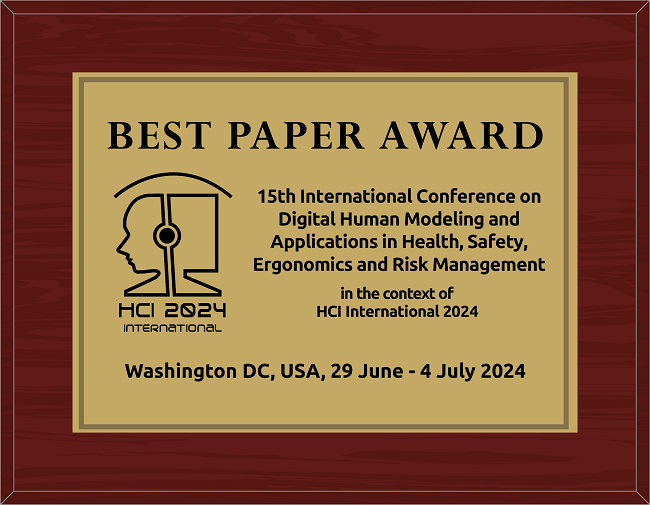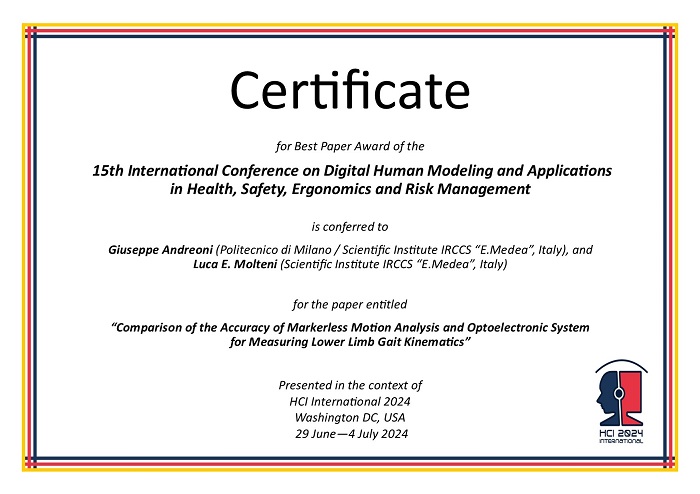
The Best Paper Award of the 15th International Conference on Digital Human Modeling & Applications in Health, Safety, Ergonomics & Risk Management
has been conferred to
Giuseppe Andreoni (Politecnico di Milano / Scientific Institute IRCCS “E.Medea”, Italy),
and Luca E. Molteni (Scientific Institute IRCCS “E.Medea”, Italy)
for the paper entitled
"Comparison of the Accuracy of Markerless Motion Analysis and Optoelectronic System for Measuring Lower Limb Gait Kinematics"

Luca Molteni
(presenter)

Best Paper Award for the 15th International Conference on Digital Human Modeling & Applications in Health, Safety, Ergonomics & Risk Management, in the context of HCI International 2024, Washington DC, USA, 29 June - 4 July 2024

Certificate for Best Paper Award of 15th International Conference on Digital Human Modeling & Applications in Health, Safety, Ergonomics & Risk Management presented in the context of HCI International 2024, Washington DC, USA, 29 June - 4 July 2024
"Background: Marker-based Optical motion tracking is the gold standard in gait analysis, for their detailed biomechanical modelling and accuracy. Today, in light of developing remote telemonitoring applications, markerless solutions are growing rapidly. Algorithms like Openpose can track human movement from a video. However, only few papers assess the validity of gait analysis using Openpose.
Objective: The purpose of this study was to assess the Openpose reliability to measure kinematics and spatiotemporal gait parameters and to evaluate the minimum technical requirements.
Methods: This analysis used video and optoelectronic motion capture simultaneously recorded. We assessed 4 healthy adults. To compare the accuracy of Openpose respect to optoelectronic system we computed the following indexes: the absolute error (AE) for spatiotemporal parameters and lower limbs kin, the lower limbs Range (ROM) of Motion’s intraclass correlation coefficients (ICC), the cross-correlation coefficients (CCC) of normalized gait cycle joint angles computed with two systems.
Results: The spatiotemporal parameter showed an ICC between good to excellent and the absolute error was very small: cadence AE < 0.56 step/min, Mean Velocity AE < 0.11 m/s, Stride length AE < 0.14 cm. The ROM of the lower limbs during gait showed a good to excellent agreement in the sagittal plane.
Also the normalized gait cycle CCC value shown a strong coupling in the sagittal plane.
Conclusion: We found Openpose to be accurate and reliably for sagittal plane gait kinematics and for spatiotemporal gait parameters in healthy adults."
The full paper is available through SpringerLink, provided that you have proper access rights.